Bursitis & Posture Impact Assessment
Assessment Guide
Answer the following questions about your symptoms and posture to understand how bursitis may be affecting your body alignment.
Your Posture Impact Analysis
When the painful swelling of bursitis hits, you’ll notice it in more ways than just a sore joint. The body instinctively shifts how you sit, stand, or move, and those adjustments can snowball into chronic postural problems. Below is a straight‑forward guide to what’s happening inside your body, why your posture suffers, and what you can actually do to get back on track.
Key Takeaways
- Bursitis inflames the small fluid‑filled sacs (bursae) that cushion joints, leading to pain‑driven posture changes.
- Common sites-shoulder, hip, and knee-trigger distinct compensatory habits that can strain the spine.
- Effective relief blends anti‑inflammatory medication, targeted physical therapy, and ergonomic tweaks.
- Early self‑assessment and home exercises can prevent short‑term pain from becoming a long‑term posture disorder.
- Seek a clinician if pain persists beyond two weeks, worsens at night, or is accompanied by swelling or fever.
Understanding Bursitis
Bursitis is the inflammation of a bursa, a small sac filled with synovial fluid that reduces friction between moving anatomical structures. While a single bursa can be affected, many people develop bursitis in areas where bones, tendons, and muscles grind against each other repeatedly.
To see why it matters for posture, first picture the bursa as a thin, fluid‑filled cushion that lines joints, tendons, and muscles, allowing smooth gliding during motion.. When that cushion swells, the smooth glide turns into a painful grind.
The neighboring joint is the point where two bones meet, enabling movement and bearing loads. A swollen bursa forces the joint to move in a restricted, often painful way. Nearby tendon is a tough band of connective tissue that attaches muscle to bone. Tendons can become strained as they compensate for the altered joint mechanics.
All of this takes place inside an environment lubricated by synovial fluid which provides nourishment and low‑friction movement for joint structures.. Inflammation disrupts that balance, creating a cascade that reaches up the kinetic chain.
How Inflammation Messes With Your Posture
Inflammation isn’t just a local pain signal; it triggers a whole‑body response that changes how you hold yourself. When a shoulder bursa swells, you’ll instinctively hunch the opposite side, protect the painful area, or raise the elbow to keep the joint in a less painful position. Over time, those tiny micro‑adjustments become habits.
Posture is the alignment of body segments relative to the earth’s gravity, influencing muscle activation patterns and joint loading. A single painful joint can cause the spine to curve, the pelvis to tilt, or the head to jut forward, all of which place extra stress on muscles that were never meant to bear that load.
The result? A domino effect: tight upper traps, rounded shoulders, lumbar hyperextension, or even knee collapse. Each of these secondary issues can produce new aches, making it harder to pinpoint the original bursitis.
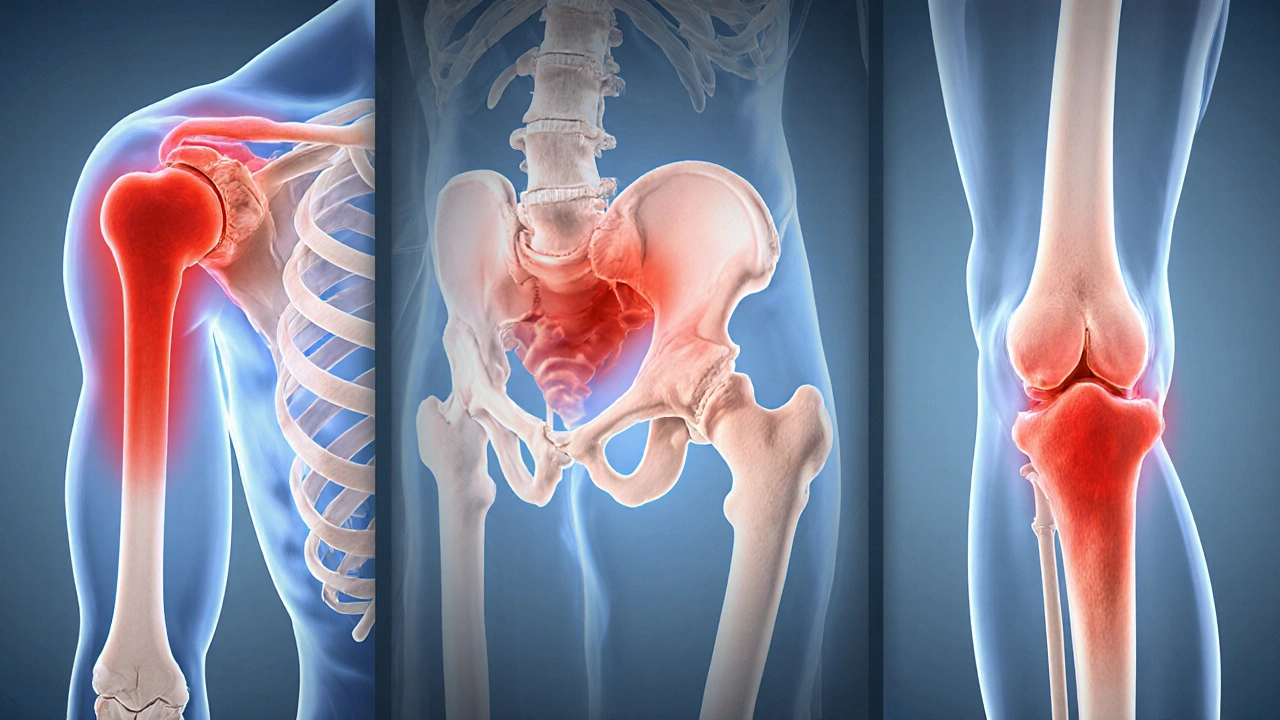
Common Sites Where Bursitis Alters Posture
Shoulder bursitis (subacromial bursa) is notorious for forcing the arm into a forward, slightly elevated position. People often develop a “rounded‑shoulder” stance, which over‑activates the upper trapezius and weakens the rhomboids.
Hip bursitis (trochanteric bursa) leads to a limp or a tendency to lean away from the affected side. The pelvis may drop on the opposite side, creating a functional scoliosis pattern that strains the lower back.
Knee bursitis (pre‑patellar or infrapatellar) makes it uncomfortable to fully straighten the leg. Users might lock the knee in a semi‑flexed position, causing the quadriceps to stay constantly contracted, which can pull the pelvis forward and increase lumbar lordosis.
Assessing the Impact on Your Alignment
Before diving into treatment, do a quick self‑check:
- Stand with your back against a wall. Note any gaps between the wall and the small of your back, the base of your neck, or your head. Large gaps indicate hyper‑extension or forward head posture.
- Raise your arms overhead and observe if one shoulder lifts higher than the other. Uneven lift signals shoulder‑side bursitis.
- Walk a short distance and watch for a limp or a constant shift of weight to the opposite hip.
If you spot any of these patterns, they’re likely compensations for bursitis‑related pain. Documenting them helps a therapist design a focused program.
Treatment Options to Restore Alignment
Healing bursitis while correcting posture is a three‑pronged approach: reduce inflammation, restore functional range, and re‑educate the body’s movement patterns.
| Method | Effectiveness | Onset of Relief | Typical Use Duration | Side Effects / Risks |
|---|---|---|---|---|
| NSAIDs (e.g., ibuprofen) | Moderate | 1‑3 days | 2‑4 weeks | Stomach irritation, kidney strain |
| Corticosteroid injection | High (short‑term) | Hours to 1 day | 1‑2 injections per year | Joint weakening, skin depigmentation |
| Physical therapy | High (long‑term) | Variable (often 1‑2 weeks) | 6‑12 weeks, ongoing maintenance | Temporary soreness, requires commitment |
| Ergonomic adjustments | Moderate‑High | Immediate after setup | Permanent if maintained | Cost of equipment, learning curve |
Here’s how each piece fits into the bigger picture:
- NSAIDs are non‑steroidal anti‑inflammatory drugs that lower pain and swelling by blocking prostaglandin production. They’re great for getting the pain down fast, but they don’t address the underlying movement dysfunction.
- Corticosteroid injection delivers a potent anti‑inflammatory directly into the bursa, often providing dramatic relief within hours. Use it sparingly because repeated shots can thin the surrounding tissue.
- Physical therapy focuses on targeted exercises, manual mobilization, and neuromuscular re‑education to restore normal joint glide and correct postural habits. It’s the only option that builds lasting strength and coordination.
- Ergonomic adjustment means modifying workstations, sleeping surfaces, and daily activities to keep the affected joint in a neutral position. Simple changes-like a shoulder‑height monitor or a hip‑support pillow-can stop the pain cycle before it starts.
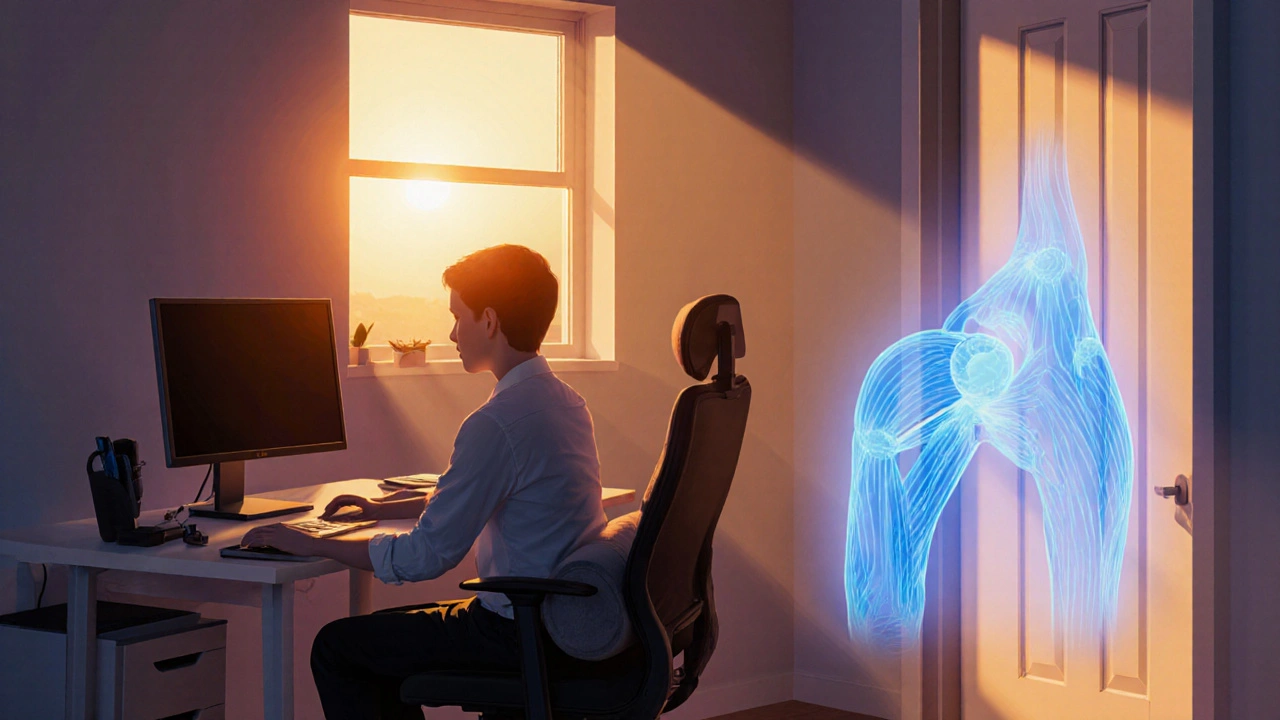
Practical Steps You Can Take Today
Even before you see a clinician, these actions can reduce irritation and begin to correct posture:
- Ice the sore area for 15‑20 minutes, three times daily, especially after activity. Cold constricts blood vessels, limiting swelling.
- Gentle stretching: For shoulder bursitis, try doorway pec stretches; for hip bursitis, perform standing hip abductor stretches; for knee bursitis, do quadriceps and calf foam‑roll.
- Postural cueing: Set a phone alarm every hour to check spine alignment-ears over shoulders, shoulders over hips.
- Workspace ergonomics: Elevate your laptop screen to eye level, keep elbows close to a 90‑degree angle, and use a lumbar roll to maintain the natural curve.
- Strengthen stabilizers: Light resistance bands can activate the rotator cuff, gluteus medius, and knee stabilizers without loading the inflamed bursa.
Consistent, low‑intensity work often beats aggressive rehab that aggravates the inflamed bursa.
When to Seek Professional Help
If pain persists beyond two weeks despite self‑care, if you notice increasing swelling, fever, or a sudden loss of joint range, schedule an appointment. A clinician may order imaging-ultrasound or MRI-to confirm bursitis and rule out infection.
During the visit, expect a rehabilitation plan that combines manual therapy, a graduated exercise program, and education on activity modification. The goal is not just to quiet the pain, but to re‑train your body to move without compensations.
Bottom Line
Bursitis may start as a tiny, painful sac, but its ripple effect can warp how you sit, stand, and walk. By tackling inflammation, rebuilding strength, and tweaking daily ergonomics, you can stop the vicious cycle and protect your spine for the long haul.
Frequently Asked Questions
Can bursitis cause permanent posture problems?
If the pain is left untreated, the body adopts compensatory habits that can become ingrained. However, with timely treatment-especially physical therapy-most people regain a neutral posture.
Are NSAIDs safe for long‑term use?
Short‑term use (up to two weeks) is generally safe for most adults, but chronic use can irritate the stomach lining and affect kidney function. Always follow dosing guidelines and discuss prolonged use with a doctor.
What’s the best home exercise for hip bursitis?
A gentle side‑lying hip abduction with a light resistance band targets the gluteus medius without loading the trochanteric bursa. Perform 2‑3 sets of 12‑15 reps on each side, twice daily.
When is a corticosteroid injection recommended?
Typically after 1‑2 weeks of persistent pain that hasn’t responded to NSAIDs and rest, and when imaging confirms isolated bursitis without infection.
How can I adjust my workstation to protect my shoulders?
Raise the monitor so the top line is at eye level, keep the mouse and keyboard within a 90‑degree elbow angle, and use a chair with armrests that support the elbows without lifting the shoulders.

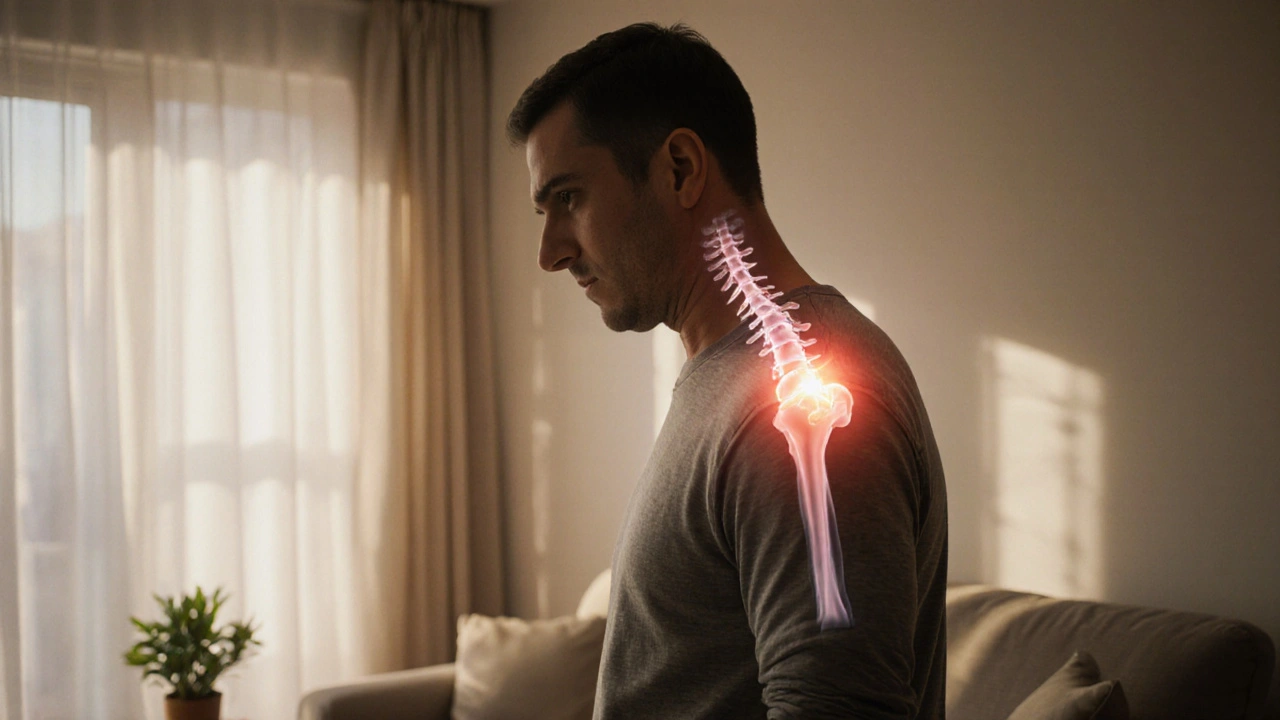
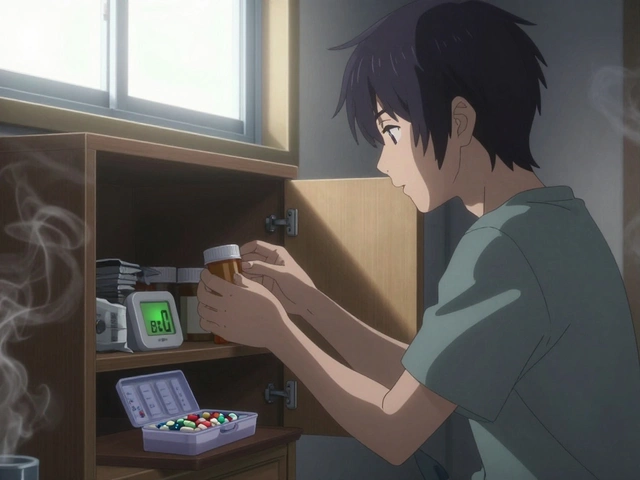
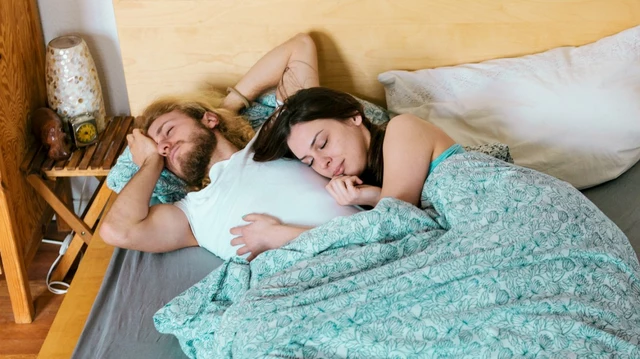
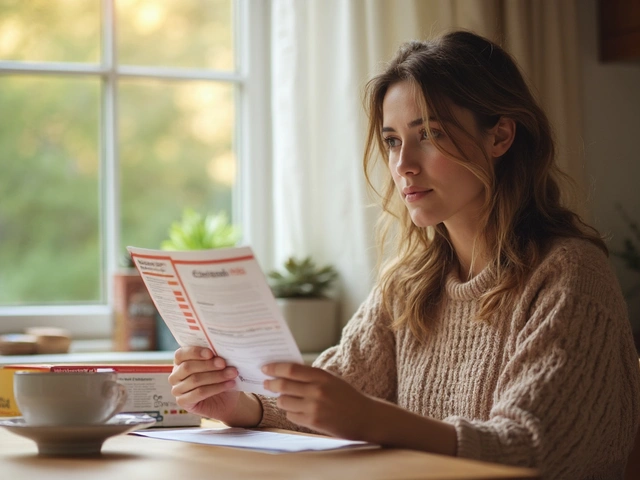

Ted G
October 7, 2025 AT 13:53